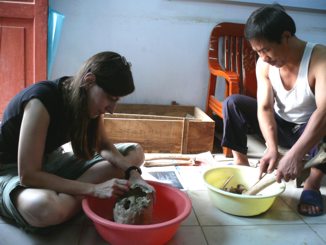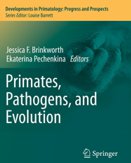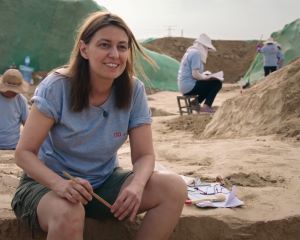Field Research:
Selected
Publications:
A
principal emphasis in my research is on how changes through time in
human behavior transform patterns of disease distribution and severity
and affect community health in different populations. In this context,
technological innovations affecting diet are of particular importance.
Increasing dependence on cereals with the transition to agriculture,
along with greater reliance on soft, thoroughly cooked foods that
accompanied advances in pottery-making, have been implicated in the
spread of iron deficiency anemia and scurvy, as well as deterioration
in oral health. Overcrowding and poor hygiene in early farming
settlements may have contributed to the spread of infectious diseases,
including tuberculosis and syphilis. Improving our specific knowledge
of how interactions between disease, human culture, and environment
played out in the past can help us develop better tools for
understanding the ongoing co-evolution of humans and disease.
By examining skeletons from archaeological contexts for a wide range of disease indicators, in concert with chemical analyses of bone samples, I assess human diet and nutrition, pathogen and nutrition related illnesses, intensities of workloads, and the incidence of violence. I conduct my present fieldwork in north-central China, studying recently excavated human skeletons, as well as performing basic cleaning, necessary conservation procedures, and the reconstruction of fragmented remains. The collections I have examined range in time from the earliest farming communities (Neolithic, ca 9,000 years ago) to the Han dynastic period (206 BC-220 AD).

By examining skeletons from archaeological contexts for a wide range of disease indicators, in concert with chemical analyses of bone samples, I assess human diet and nutrition, pathogen and nutrition related illnesses, intensities of workloads, and the incidence of violence. I conduct my present fieldwork in north-central China, studying recently excavated human skeletons, as well as performing basic cleaning, necessary conservation procedures, and the reconstruction of fragmented remains. The collections I have examined range in time from the earliest farming communities (Neolithic, ca 9,000 years ago) to the Han dynastic period (206 BC-220 AD).

Edited Volumes
Kate
Pechenkina and Mark Oxenham, editors (2013) Bioarchaeology of
East Asia: Movement, Contact, Health. University Press of
Florida.
Including chapters:
1. Research on human skeletal biology in East Asia: a historical overview / Kate Pechenkina and Marc Oxenham, pp 1-27.
2. Human ecology in continental and insular East Asia / Kate Pechenkina and Marc Oxenham, pp 28-60.
12. Yangshao oral health from West to East: effects of increasing complexity and contacts with neighbors / Kate Pechenkina, Ma Xiaolin, Fan Wenquan, Wei Dong, and Zhang Quanchao, pp 288-322.
18. Trajectories of health in early farming communities of East Asia / Kate Pechenkina, Ma Xiaolin, and Fan Wenquan, pp 444-481.
19. East Asian bioarchaeology: major trends in a temporally, genetically, and eco-culturally diverse region / Marc Oxenham and Kate Pechenkina, pp 482-498.
Including chapters:
1. Research on human skeletal biology in East Asia: a historical overview / Kate Pechenkina and Marc Oxenham, pp 1-27.
2. Human ecology in continental and insular East Asia / Kate Pechenkina and Marc Oxenham, pp 28-60.
12. Yangshao oral health from West to East: effects of increasing complexity and contacts with neighbors / Kate Pechenkina, Ma Xiaolin, Fan Wenquan, Wei Dong, and Zhang Quanchao, pp 288-322.
18. Trajectories of health in early farming communities of East Asia / Kate Pechenkina, Ma Xiaolin, and Fan Wenquan, pp 444-481.
19. East Asian bioarchaeology: major trends in a temporally, genetically, and eco-culturally diverse region / Marc Oxenham and Kate Pechenkina, pp 482-498.

Publications
Halcrow S, Miller MJ, Pechenkina K, Dong Yu, Fan Wenquan. In press. The Bioarchaeology of Infant Feeding. In The Routledge Handbook of Anthropology and Reproduction, editors Cecilia Tomori and Sallie Han.
Berger E, Pechenkina K. 2020. Paleopathological research in continental China: Introduction to the Special Issue. International Journal of Paleopathology. 28:92-98. Article link
Halcrow SE, Miller MH, Snoddy AM, Fan W, Pechenkina K. 2019. Growing up different in Neolithic China: A contextualised case study and differential diagnosis of a young adult with skeletal dysplasia. International Journal of Paleopathology. 28:6-19. Article link
Pechenkina K, Fan W, Luo X. 2019. What's that big thing on your head? Diagnosis of a large frontoparietal lesion on an Eastern Zhou skull from Henan, China. International Journal of Paleopathology 26:84-92. Article link
Sun L, Pechenkina K, Cao Y, Zhang H, Qi X. 2019. Cases of endocranial lesions on juvenile skeletons from Longshan cultural sites in Henan Province, China. International Journal of Paleopathology 26:61-74. Article link
Thomas, C, Ji Y, Wu C, Datz, H, Boyle C, MacLeod B, Patel S, Ampofo M, Currie M, Harbin J, Pechenkina K, Lodhi N, Johnson S, Tulin AV. 2019. Hit and run versus long-term activation of PARP-1 by its different domains fine-tunes nuclear processes. PNAS 116:9941-9946. Article link
Berger E, Pechenkina K. 2018. Bioarchaeology of China: Bridging Biological and Archaeological Inquiries. In Archaeological Human Remains - Global Perspectives. Vol 2. Edited by O'Donnabhain, Barra, Lozada Cerna, Maria Cecilia.. Springer Press. PDF
Pechenkina K. 2018. Of millets and Wheat: Diet and health on the Central Plain of China during the Neolithic and Bronze Age. Handbook of Early Chinese History. Paul R. Goldin (ed). Routledge. pp. 39-60. PDF
Pechenkina K, Ma X, Fan W. 2017. Health Status and Burial Status in Early China. In Bones Of Complexity: Bioarchaeological Case Studies of Social Organization and Skeletal Biology. Edited By Haagen D. Klaus, Amanda R. Harvey, and Mark N. Cohen. Gainesville: University Press of Florida.pp 173-205. PDF
Dong Y, Morgan C, Cinenov Y, Zhou L, Fan W, Ma X, Pechenkina K. 2017. Shifting diets and the rise of male-biased inequality on the Central Plans of China during Eastern Zhou. Proc Natl Acad Sci USA 114(5):932-937. Article link
Thomas C, Ji Y, Lodhi N, Kotova E, Pinnola AD, Golovine K, Makhov P, Pechenkina K, Kolenko V, Tulin AV. 2016. Non-NAD-Like poly (ADP-Ribose) Polymerase-1 inhibitors effectively eliminate cancer in vivo.EBioMedicine 13:90-98. Article link
Pechenkina EA. 2012. From morphometrics to holistics: the emergence of paleopathology in China. In: The Global History of Paleopathology: Pioneers and Prospects. Edited by Jane Buikstra and Charlotte Roberts. pp 345-361. Oxford University Press.

